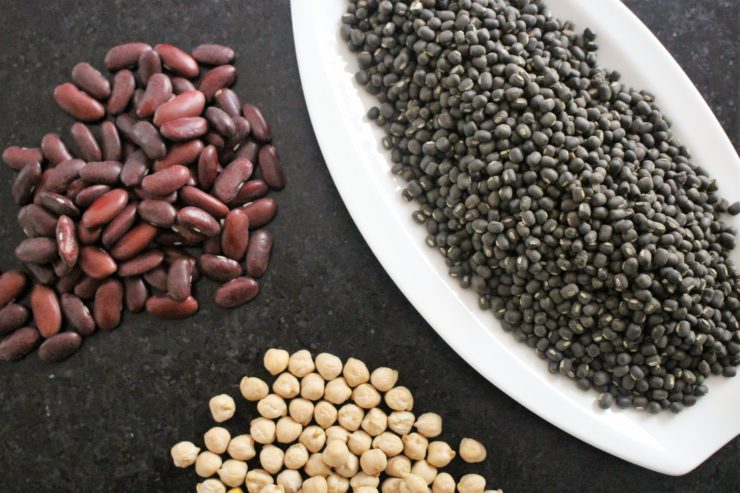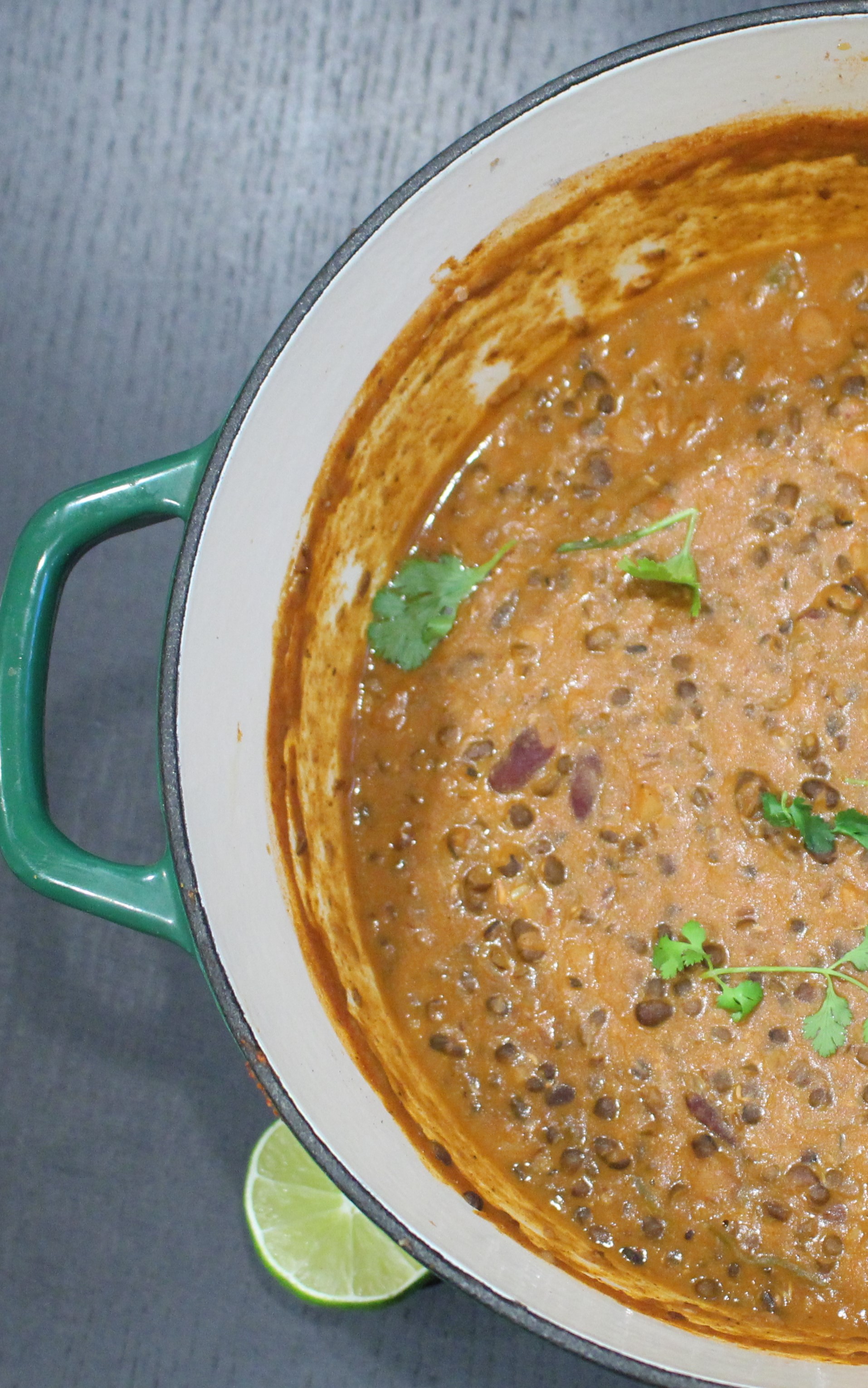 I am aware of two different terms used to describe this yogurt concoction, one is pachadi, and the other is raita. The former word is more commonly used in southern India and the latter is more common in northern India. In our home, we use these terms interchangeably, since in essence, we are referring to the same thing. I am sure, to others, there may be a distinction. The only thing I have noticed that may help distinguish them is that in my Grandmother’s pachadi, you will note the addition of tempered mustard seeds, which she tells me is traditional, but definitely not necessary in a pinch.
I am aware of two different terms used to describe this yogurt concoction, one is pachadi, and the other is raita. The former word is more commonly used in southern India and the latter is more common in northern India. In our home, we use these terms interchangeably, since in essence, we are referring to the same thing. I am sure, to others, there may be a distinction. The only thing I have noticed that may help distinguish them is that in my Grandmother’s pachadi, you will note the addition of tempered mustard seeds, which she tells me is traditional, but definitely not necessary in a pinch.
This tomato pachadi can be used as a side for many entrees, particularly to many that are Indian. The main ingredient in pachadi is yogurt, which is the perfect cooling agent to a spicy dish, it can also act as a dipping sauce, and leftover pachadi can even be used as a salad dressing. The interesting thing about this recipe is that it doesn’t have to be a tomato pachadi, it can be a grated carrot, cucumber, onion, sauteed okra or bell pepper pachadi or a combination of any and all of the ingredients you are brave enough to try. Although, if you asked my Grandmother she would raise her eyebrow and tell you that I was wrong. My favourite will always be my Grandmother’s fried okra pachadi.
The optional step of this recipe is to add tempered mustard seeds to the pachadi, it will impart a slightly toasted-smokey flavour to your pachadi. Tempering mustard seeds is quite easy, it only takes a minute or two, it involves frying black mustard seeds in oil, till they crackle and pop.
INGREDIENTS
2 cups of yogurt, low fat, the non-thick kind
1 tomato, chopped, alternatively use grated carrot, chopped cucumber, onion, or sauteed bell pepper, okra
2 tablespoons coriander, chopped
1/2 a chile, trimmed, chopped
1/8 teaspoon ground asafoetida
1/4 teaspoon black mustard seeds (optional)
1/2 teaspoon of vegetable oil
salt to taste
METHOD
 I am aware of two different terms used to describe this yogurt concoction, one is pachadi, and the other is raita. The former word is more commonly used in southern India and the latter is more common in northern India. In our home, we use these terms interchangeably, since in essence, we are referring to the same thing. I am sure, to others, there may be a distinction. The only thing I have noticed that may help distinguish them is that in my Grandmother’s pachadi, you will note the addition of tempered mustard seeds, which she tells me is traditional, but definitely not necessary in a pinch.
I am aware of two different terms used to describe this yogurt concoction, one is pachadi, and the other is raita. The former word is more commonly used in southern India and the latter is more common in northern India. In our home, we use these terms interchangeably, since in essence, we are referring to the same thing. I am sure, to others, there may be a distinction. The only thing I have noticed that may help distinguish them is that in my Grandmother’s pachadi, you will note the addition of tempered mustard seeds, which she tells me is traditional, but definitely not necessary in a pinch.
This tomato pachadi can be used as a side for many entrees, particularly to many that are Indian. The main ingredient in pachadi is yogurt, which is the perfect cooling agent to a spicy dish, it can also act as a dipping sauce, and leftover pachadi can even be used as a salad dressing. The interesting thing about this recipe is that it doesn’t have to be a tomato pachadi, it can be a grated carrot, cucumber, onion, sauteed okra or bell pepper pachadi or a combination of any and all of the ingredients you are brave enough to try. Although, if you asked my Grandmother she would raise her eyebrow and tell you that I was wrong. My favourite will always be my Grandmother’s fried okra pachadi.
The optional step of this recipe is to add tempered mustard seeds to the pachadi, it will impart a slightly toasted-smokey flavour to your pachadi. Tempering mustard seeds is quite easy, it only takes a minute or two, it involves frying black mustard seeds in oil, till they crackle and pop.
INGREDIENTS
2 cups of yogurt, low fat, the non-thick kind
1 tomato, chopped, alternatively use grated carrot, chopped cucumber, onion, or sauteed bell pepper, okra
2 tablespoons coriander, chopped
1 teaspoon of ginger, grated
1/2 a chili, trimmed, chopped
1/8 teaspoon ground asafoetida
1/4 teaspoon black mustard seeds (optional)
1/2 teaspoon of vegetable oil
salt to taste
METHOD
- In a small bowl, combine the yogurt, chopped tomatoes, coriander, ginger, chili, asafoetida, the cooled mustard seeds, and salt. Serve as a cooling agent to Dal Makhani, or use as a dipping sauce.
- Tempering (optional). Add the oil to a small frying pan on medium high heat, then add the black mustard seeds to where the oil has pooled and settled. The seeds will start to bubble, it will crackle and pop, turn the heat down to low, while the seeds finish popping in the residual heat. Tempering is finished when the seeds have stopped popping. Let cool.
Note: Be careful when you are tempering, the oil can heat up quickly and I find mustard seeds can burn in a blink of an eye. Also, if you are not used to tempering, it can be tricky to handle popping seeds covered in hot oil, so keep a lid handy to cover the pan, while the seeds finish popping.

 Dal Makhani is an excellent example of how simple cooking can lead to a beautiful plate of comfort food. Dal refers to the lentils in this stew. I only say stew for a lack of a better word, and I definitely will not say that this is a curry. Yes, the word curry can be used to describe vegetables or meat in an array of spices, but I find this term too general.
Dal Makhani is an excellent example of how simple cooking can lead to a beautiful plate of comfort food. Dal refers to the lentils in this stew. I only say stew for a lack of a better word, and I definitely will not say that this is a curry. Yes, the word curry can be used to describe vegetables or meat in an array of spices, but I find this term too general. 
